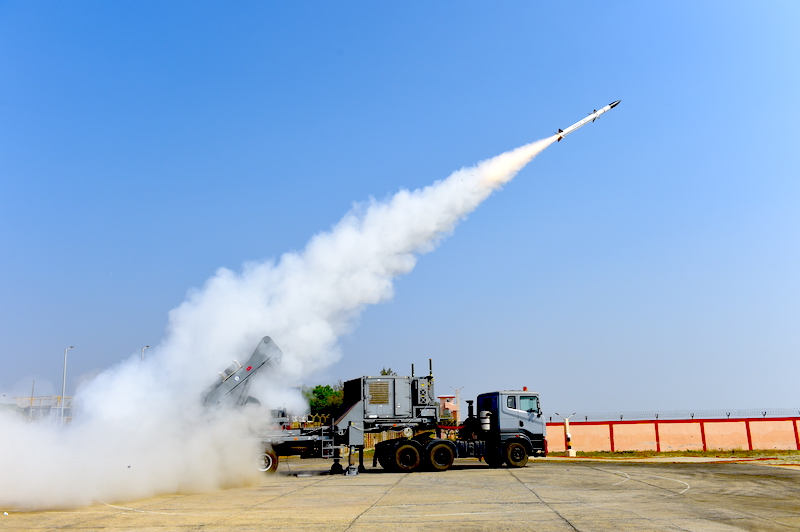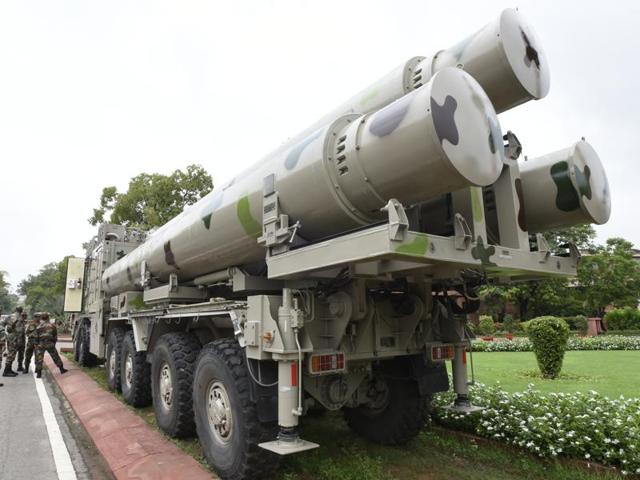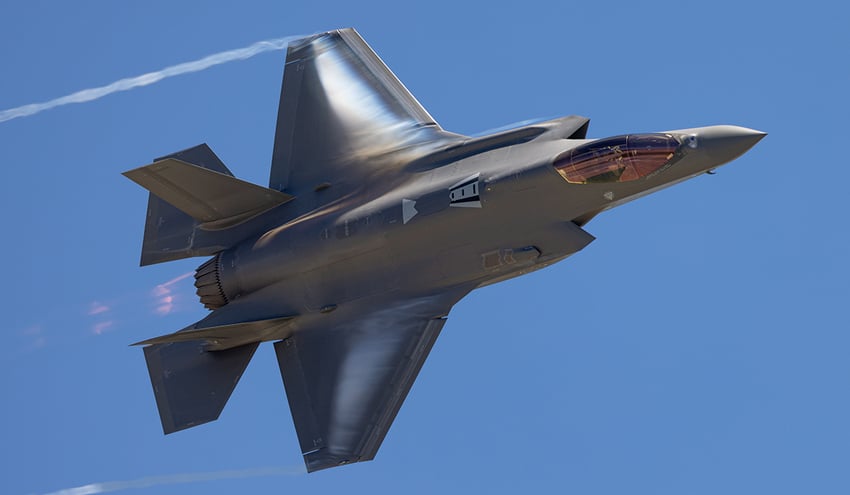admin
SOURCE: RAUNAK KUNDE / NEWS BEAT / IDRW.ORG


In a stunning revelation, retired Pakistan Air Force (PAF) Air Marshal Masood Akhtar has confirmed that PAF’s Bholari Air Base, a critical military installation in Sindh province, was struck by four BrahMos supersonic cruise missiles on May 10, 2025, as part of India’s Operation Sindoor. The precision strikes, which targeted a hangar at the base, resulted in the destruction of a Saab 2000 Erieye Airborne Early Warning and Control System (AWACS) aircraft and caused significant casualties among PAF personnel, marking a severe blow to Pakistan’s air defense capabilities.
Bholari Air Base, located near Hyderabad in Sindh’s Jamshoro district, is a cornerstone of the PAF’s Southern Air Command, housing advanced fighter jets like the F-16A/B Block 15 ADF and JF-17 Thunder, as well as the now-damaged Saab 2000 Erieye AWACS. The base, inaugurated in recent years, is strategically positioned to support rapid deployment and maritime operations, making it a vital asset for Pakistan’s defense architecture.
Continue readingSOURCE: RAUNAK KUNDE / NEWS BEAT / IDRW.ORG


Armenia is deepening its defense ties with India as it prepares to receive the second batch of the Akash-1S air defense missile system after July 2025, following the successful delivery of the first battery in November 2024. This development is part of a $720 million deal signed in 2022 for 15 Akash systems, marking a significant step in Armenia’s efforts to modernize its air defense capabilities amid regional tensions. However, the South Caucasian nation is already looking ahead, expressing keen interest in the next-generation Akash-NG system, which is slated to enter production in 2026, according to sources cited by the Indian Defence Research Wing (idrw.org).
The Akash-1S, an advanced variant of the Akash missile system developed by India’s Defence Research and Development Organisation (DRDO), has already proven its worth for Armenia. Equipped with an indigenous seeker, the Akash-1S enhances hard-kill probability, offering greater precision in engaging aerial threats such as fighter jets, cruise missiles, and drones at ranges up to 30 kilometers. Each battery, manufactured by Bharat Dynamics Limited (BDL) and Bharat Electronics Limited (BEL), includes four launchers with three missiles each and a Rajendra 3D radar, providing robust protection against regional adversaries. Armenia’s acquisition of the system reflects its strategic pivot toward diversifying defense procurement, reducing reliance on traditional suppliers like Russia, which accounted for over 90% of its arms imports between 2011 and 2020.
Continue readingSOURCE: RAUNAK KUNDE / NEWS BEAT / IDRW.ORG


India’s air defense capabilities are set to receive a significant boost as the Indian Air Force (IAF) anticipates the delivery of the fourth regiment of the Russian-made S-400 Triumf air defense system by the fourth quarter of 2025, with the fifth and final regiment scheduled for August 2026. This development, part of a $5.43 billion (?35,000 crore) deal signed with Russia in October 2018 for five regiments, underscores India’s strategic focus on countering aerial threats from Pakistan and China. Despite delays caused by the Russia-Ukraine conflict, the impending deliveries.
The S-400 Triumf, known to NATO as the SA-21 Growler, is a mobile, long-range surface-to-air missile (SAM) system developed by Russia’s Almaz-Antey corporation. Capable of engaging targets at ranges up to 400 km and altitudes of 30 km, the S-400 can intercept fighter jets, ballistic missiles, cruise missiles, and drones, tracking up to 80 targets simultaneously. Each regiment consists of two batteries, with four launchers per battery, supported by multifunction radars like the 91N6E Big Bird and 92N6E Grave Stone, and a 55K6E command module. The system employs four missile types: the 40N6E (400 km range), 48N6E3 (250 km), and shorter-range 9M96E/E2 (40–120 km), offering multi-layered defense against diverse threats.
Continue readingSOURCE: AFI


For the first time, official reports have confirmed that the Indian Air Force (IAF) employed an innovative deception tactic during Operation Sindoor on the night of May 9–10, 2025, using unmanned aerial vehicles (UAVs) camouflaged to mimic fighter jets. These “dummy” pilotless aircraft lured Pakistani Air Force (PAF) fighters and air defense systems into targeting false threats, exposing critical radar and command-and-control positions.
The IAF’s strategy, described as a masterclass in modern warfare, blended deception, electronic warfare, and precision strikes to cripple Pakistan’s air defenses and pave the way for devastating missile attacks on 11 of 12 PAF airbases. This article explores the groundbreaking use of these decoy UAVs, their likely configurations, and their pivotal role in one of South Asia’s most significant military operations.
Continue readingSOURCE: AFI


On the night of May 9–10, 2025, the Indian Air Force (IAF) executed one of the most audacious and technologically advanced military operations in South Asian history, dubbed Operation Sindoor. In a retaliatory strike following a Pakistan-backed terror attack in Pahalgam on April 22, India unleashed a barrage of 15 BrahMos supersonic cruise missiles, launched from both land-based systems and air-based assets, targeting 12 Pakistani Air Force (PAF) bases.
The operation crippled Pakistan’s air defenses and dealt a severe blow to its air operational capabilities, with at least four missiles striking the strategically vital Bholari airbase. The use of decoy “dummy” aircraft, alongside precision munitions like the Crystal Maze and Scalp missiles, showcased India’s tactical brilliance and marked the first combat deployment of the BrahMos missile system.
Continue readingSOURCE: AFI


Over the past four days, from May 11 to May 14, 2025, the ongoing India-Pakistan conflict has exposed a glaring absence of Pakistan’s much-touted Baykar unmanned combat aerial vehicles (UCAVs), such as the TB2 Bayraktar and Akinci, on the frontline. Despite years of claims from Pakistani defense enthusiasts—often dubbed “fanboys”—that Pakistan boasts “the most extensive UCAV fleet in South Asia,” not a single TB2 or Akinci has been spotted in action. Meanwhile, Indian unmanned aerial vehicles (UAVs) have been providing live footage of Indian Air Force (IAF) strikes, showcasing India’s dominance in aerial reconnaissance and combat operations.
Pakistan’s acquisition of Turkish-made Baykar UCAVs, particularly the TB2 and the more advanced Akinci, was heralded as a game-changer for the Pakistan Air Force (PAF). The TB2, known for its success in conflicts like Nagorno-Karabakh, has a proven track record of precision strikes and intelligence, surveillance, and reconnaissance (ISR) missions, with an endurance of up to 27 hours and a payload capacity for laser-guided munitions. The Akinci, a high-altitude long-endurance (HALE) UCAV, can carry heavier payloads, including air-to-air missiles, and operate at altitudes of up to 40,000 feet. Between 2022 and 2024, Pakistan reportedly inducted 12–18 TB2s and a smaller number of Akinci drones, aiming to bolster its aerial capabilities against India.
Continue readingSOURCE: AFI


In a surprising turn of events, America’s apparent alignment with Pakistani narratives during the recent India-Pakistan tensions may have jeopardled a significant backlash in New Delhi, potentially jeopardling billions of dollars in future weapons sales for U.S. defense giants like Boeing and Lockheed Martin. As India accelerates its shift away from Russian military hardware under pressure from the Trump administration, sources within the Indian Ministry of Defence (MoD) suggest that the U.S. media’s perceived pandering to Pakistani claims during Operation Sindoor has kindled fury among Indian officials.
This could jeopardize follow-up orders for platforms like the CH-47 Chinook, P-8I Poseidon, and C-130J Super Hercules, while dimming prospects for American contenders in India’s Multi-Role Fighter Aircraft (MRFA) competition, including the coveted F-35A stealth fighter. With India reportedly planning to stall talks with the U.S. until the end of Trump’s presidency.
Continue readingSOURCE: PNN. ANI


In an era of fast-evolving conflicts and unmanned combat, drones have emerged as the decisive force in modern warfare. From targeted loitering strikes to autonomous surveillance missions across the globe, drones have redefined how nations assert dominance and secure their borders. The current war landscape demands speed, precision, and decision-making without latency–something traditional warfare systems cannot deliver.
As defence strategies worldwide shift towards autonomous and intelligent aerial systems, the need of the hour is clear: AI-powered, modular drone ecosystems that can operate with minimal human intervention while adapting dynamically to battlefield scenarios. Rising to this challenge, Aerpace Industries Limited, in collaboration with Aerpace Robotics Pvt Ltd, UAV Tech Pvt Ltd, and Leospear Defence Pvt Ltd, has successfully developed and tested India’s next-generation smart UAV ecosystem under the aerShield initiative. Each partner brings a core capability–AI and flight software from Aerpace Robotics, airframe and propulsion engineering from UAV Tech, and advanced munitions integration from Leospear Defence.
Continue readingSOURCE: PTI
)

India is set to conduct its first-ever biological experiments aboard the International Space Station (ISS) to study the sustainability of human life in space, Science and Technology Jitendra Singh said on Thursday.
An important initiative under the BioE3, these unique experiments, spearheaded by the Indian Space Research Organisation (Isro) in collaboration with the Department of Biotechnology (DBT), will be carried out as part of the upcoming International Space Station (ISS) mission AXIOM-4, with Indian astronaut Group Captain Shubhanshu Shukla as a crew member.
Continue readingSOURCE: PTI


Prime Minister Shehbaz Sharif on Thursday extended an offer of talks to India, saying Pakistan is ready to engage “for peace”. Shehbaz made the comments during a visit to the Kamra air base in the country’s Punjab province where he interacted with officers and soldiers involved in the recent military confrontation with India.
“We are ready to talk with it (India) for peace,” he said.
Continue readingSOURCE: ANI


External Affairs Minister S Jaishankar on Thursday strictly reaffirmed that the Kashmir issue is a bilateral matter, focusing on Pakistan’s illegal occupation of Indian territory in Pakistan-occupied Kashmir.
He said that the Indian government is willing to discuss the Kashmir issue with Pakistan, specifically regarding the vacating of illegally occupied Indian territory.Jaishankar, while talking to reporters on the sidelines of the inauguration of the Embassy of Honduras, said, “So sometimes the Kashmir issue has been brought up again. The only thing which remains to be discussed on Kashmir is the vacating of illegally occupied Indian territory in Pakistan-occupied Kashmir. We are open to discussing that with Pakistan. So I want you to spell out our positions very clearly so that you know what is in your minds and what many of you have raised with me on various occasions. The government’s position is very, very clear.”
Continue readingSOURCE: ANI


Military aviation analyst and historian Tom Cooper has highlighted Pakistan’s financial struggles, stating that the country has been bankrupt for decades and relies heavily on foreign sponsors to stay afloat.
‘Pakistan is bankrupt, actually, since the decades already. It’s always kept alive by some sponsor from abroad,’ Cooper told ANI. Cooper noted that Pakistan’s financial backers have changed over time. ‘To times Saudi Arabia, then China, then Qatar and Italy. So Pakistan actually on its own cannot afford really much. It is always dependable on…,’ he said, emphasising Pakistan’s dependence on external funding.
Continue readingSOURCE: REUTERS


India revoked the security clearance of Celebi Airport Services India, a unit of Turkey’s Celebi (CLEBI.IS), opens new tab, with immediate effect, citing national security concerns, the country’s civil aviation ministry said in an order on Thursday.
New Delhi’s decision came a day after travel booking firms said Indians were cancelling holidays in popular resorts in Turkey and Azerbaijan following the countries’ support for Pakistan during the recent conflict with India.
Continue readingSOURCE: ANI


Defense Minister Rajnath Singh visited the Srinagar air base and Badami Bagh Cantonment in Jammu and Kashmir to meet with Indian Air Force (IAF) and Army personnel. He commended their bravery during “Operation Sindoor,” a military response to the April 22nd Pahalgam terror attack, where 26 people were killed.
During his visit, Singh inspected Pakistani shells recovered from cross-border shelling. He praised the soldiers’ destruction of Pakistani posts, stating, “the enemy will never be able to forget Op Sindoor.” He also acknowledged the public’s anger towards Pakistan following the Pahalgam attack.
Continue readingSOURCE: PTI
)

India on Thursday welcomed Kabul’s firm rejection of attempts to create distrust between India and Afghanistan during a phone conversation between External Affairs Minister S Jaishankar and acting Afghan Foreign Minister Amir Khan Muttaqi.
In the first publicly acknowledged phone conversation, Jaishankar also “deeply” appreciated Muttaqi’s condemnation of the Pahalgam terror attack. “Welcomed his firm rejection of recent attempts to create distrust between India and Afghanistan through false and baseless reports,” Jaishankar said, in an apparent reference to a report in a section of the Pakistani media that claimed India had “hired” the Taliban to carry out a “false flag” operation at Pahalgam.
Continue reading